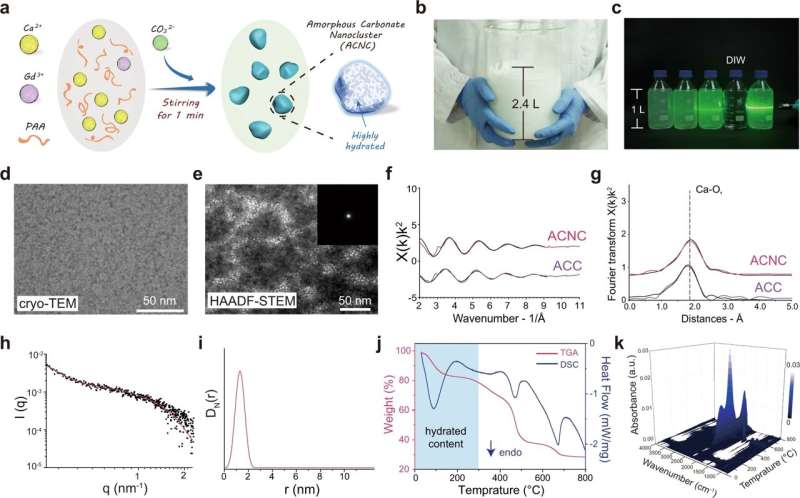Researchers develop highly hydrated paramagnetic amorphous calcium carbonate nanoclusters as an MRI contrast agent

By virtue of enhanced contrasting performance and little gadolinium ion leakage, gadolinium-based inorganic nanoparticles have attracted considerable attention for their development into clinical agents. However, its ability to clinically translate to date has been restricted by limited relaxivity and mass production.
Recently, Prof. Yu Shuhong's team from the University of Science and Technology of China (USTC) of Chinese Academy of Sciences, in collaboration with Prof. Lu Yang from the Hefei University of Technology, Prof. Helmut Cölfen from the University of Konstanz, have found that high water content facilitates transparent MRI contrasting enhancement of gadolinium-based nanoagents.
In light of this discovery, by developing a facile one-pot method with large scale and cost-effective production at room temperature, they successfully fabricated highly hydrated paramagnetic amorphous calcium carbonate nanoclusters (ACNC) served as MR contrast agents. This work was published in Nature Communications.
With high resistance to ion leakage, the longitudinal relaxivity of ACNC (37.93 ± 0.63 mM-1·s-1 under 3.0 T) is ten times higher than that of the commercially available MR contrast agent gadopentetic acid (Gd-DTPA), thus it can serve as a potential MR contrast agent. Furthermore, ACNC exhibited better contrast-enhanced MR angiography (CE-MRA) than Gd-DTPA in various animals, including rats, rabbits and beagle dogs, even at very low dosage.
The research lays the foundation for the biomedical potential of amorphous calcium carbonate composites. Thanks to ACNC's low toxicity, partial renal clearance, and large potential in mass production, a new generation of more efficient diagnostic agents based on amorphous nanoclusters is made possible.
This study provides valuable insights for creating highly hydrated and sensitive materials for biomedical applications in the future.
More information: Liang Dong et al, Highly hydrated paramagnetic amorphous calcium carbonate nanoclusters as an MRI contrast agent, Nature Communications (2022). DOI: 10.1038/s41467-022-32615-3




















